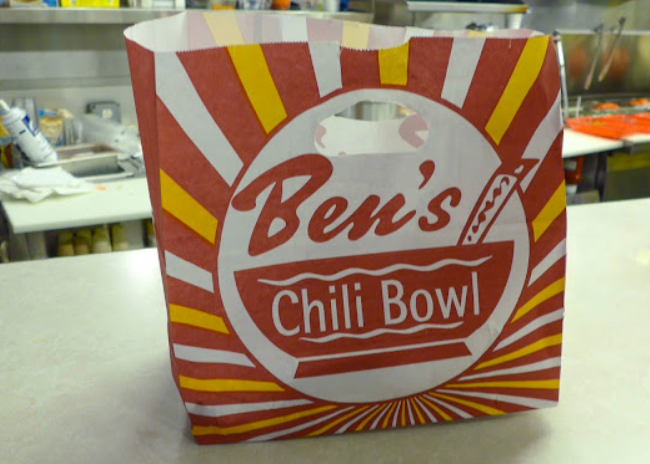Restaurants owners and foodservice operators recognize the importance of controlling their customer experience —both inside their four walls and outside. That’s where takeout and paper goods come into the equation, says Scott Attman, vice president of Acme Paper, a packaging distributor.
 Scott Attman, vice president of Acme Paper.Since the pandemic, carryout, delivery and off-premises food consumption has expanded among many verticals and not just fast casual and quick-service restaurants food, Attman says. “We’ve seen a growth in the use of paper goods in all verticals, including educational institutions, country clubs, hotels, sports and entertainment venues, and even full-service and fine-dining segments.”
Scott Attman, vice president of Acme Paper.Since the pandemic, carryout, delivery and off-premises food consumption has expanded among many verticals and not just fast casual and quick-service restaurants food, Attman says. “We’ve seen a growth in the use of paper goods in all verticals, including educational institutions, country clubs, hotels, sports and entertainment venues, and even full-service and fine-dining segments.”
When crafting their off-premises dining experiences, operators have varying goals and objectives depending on the nature of their customers and how they interact with them. “We believe everyone has some point of differentiation and want that to be expressed in packaging programs,” Attman says. Here are some ways he sees operators in all segments leverage paper goods to achieve certain goals and objectives.
Expanding Revenue Streams
Offering takeout is just another way restaurants can maximize revenue and profits as margins and competition get tougher.
“One of our clients years ago said, ‘I can continue to expand my business by opening new locations but that’s a costly proposition and takes a lot of capital resources at the same time,’” Attman says. “’Or I can continue to grow my business by increasing carryout and third-party food deliveries by just delivering a great product that people want to return to.’ That client in Washington D.C., said to me, ‘I have a competitor to the left and right of me and sometimes above and below; I have to find a way to differentiate my packaging program so that when people continue to choose us for their take-out needs.’”
Creating Memorable Experiences
Packaging and paper good choices should not and cannot be an afterthought, for several reasons. “You’re still  Image courtesy of Acme Papercreating first impressions with takeout; there’s no difference in serving a guest in the restaurant and serving a guest outside of it,” Attman says. “You want them to have the best experience every time they interact with your [concept].”
Image courtesy of Acme Papercreating first impressions with takeout; there’s no difference in serving a guest in the restaurant and serving a guest outside of it,” Attman says. “You want them to have the best experience every time they interact with your [concept].”
For Attman, that typically involves studying the menu and determining the right packaging for quality control and freshness. “For many clients, the primary objective is keeping the food hot and ensuring a high-level of appearance and presentation,” he says. For hospitals it might be slightly different; operators might prioritize ease of use. “[These clients] might be looking for containers that are easier to open and straws that are flexible and bendable.”
Country clubs, on the other hand, might look to paper goods and packaging to fulfill family dinners and other larger-scale meals to-go. Some prioritize functionality and appearance; for others, sustainability is important.
Packaging choices impact kitchen design, too, Attman says. The process of opening a restaurant or other foodservice operation these days takes into account allocating a defined space of storage for packaging goods if offering take-out. “These pieces need somewhere to land, but not all restaurants can be small warehouses,” he says.
Achieving Sustainability Goals
Before the pandemic, sustainability was a huge consideration in paper goods choices, but during the height of it, many operators put those goals on the backburner just to get by. “We’re coming back to those original conversations about sustainability and understanding the goals of operators today,” Attman says. “Many are very conscious of their carbon footprint because it’s becoming more important to their customers as well.”
College/universities tend to be the most invested in sustainability goals right now, but so are increasing numbers of sports and entertainment venues and hospitals. Available packaging products meet those goals, such as salad bowls made from PET, which Attman says is highly recycled because there is a lot of demand for that product.
There’s also recyclable aluminum, favored by many steakhouses, clubs and grocers offering hot food to-go. Compostables run the gamut, from boxes and hinged containers made with everything from “bamboo to sugar cane to wheat,” Attman says. “Rectangular containers tend to work the best in most size bags; large squares can be bulky or require more bagging to fit, which is wasteful in terms of money, space and resources.”
Growing Branding Opportunities
 Image courtesy of Ben’s Chili BowlAn added benefit of a well-thought-out branded packaging program includes the marketing it generates. Attman points to Ben’s Chili Bowl in Washington, D.C., as an example “Their bags are really loudly designed, so loud that you can see them from across the street. These bags work really well in an urban environment where many people are walking with their food to-go.”
Image courtesy of Ben’s Chili BowlAn added benefit of a well-thought-out branded packaging program includes the marketing it generates. Attman points to Ben’s Chili Bowl in Washington, D.C., as an example “Their bags are really loudly designed, so loud that you can see them from across the street. These bags work really well in an urban environment where many people are walking with their food to-go.”
Of course, at sports venues, there are the ubiquitous souvenir cups. “But you can also play with branding on deli sheets, popcorn buckets, napkins and single-use cups like branded aluminum cups,” Attman says.
Packaging has come a long way since 1946 when Attman’s grandfather started Acme Paper. “We do shop with our eyes; the perceived value of putting food in the right packaging has an impact,” he says. “It’s amazing if you just give a few extra moments of thought when making those decisions about what kind of emotions you can bring out in the guest and the memorable experiences you can create. You can create whimsical experiences or simply ensure hot food stays hot and cold food stays cold.”
Not to mention, with the advent of social media, “everything now is for public consumption,” Attman says. “If someone posts a picture of your [takeout] food in its specialized containers, that gets in front of a lot of eyeballs; and customers will post things they don’t like also.”
Gone are the days of last-minute, less thoughtful choices when it comes to food packaging supplies.



